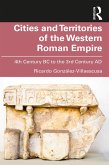This study redefines Pompeii's fortifications as a central monument that physically and symbolically shaped the city. It considers the internal and external forces that morphed their appearance and traces how the fortifications served to foster a sense of community. The city wall emerges as a dynamic, ideologically freighted monument that was fundamental to the image and identity of Pompeii. The book is a unique narrative of the social and urban development of the city from foundation to the eruption of Vesuvius, through the lens of the public building most critical to its independence and survival.
Dieser Download kann aus rechtlichen Gründen nur mit Rechnungsadresse in A, B, BG, CY, CZ, D, DK, EW, E, FIN, F, GR, HR, H, IRL, I, LT, L, LR, M, NL, PL, P, R, S, SLO, SK ausgeliefert werden.
"The Fortifications of Pompeii and Ancient Italy is a valuable read for anyone interested in the history of ancient Italy or in that of fortification and urban planning and the architectural influences on culture and society." - A. A. Nofi, The NYMAS Review
"[T]he book demonstrates, in an articulated and sustained manner, the potential that walls hold for our broader understanding of an ancient town. This is one of the first book-length studies to take seriously the claim that circuit walls hold as much, if not more, civic importance as they do military. One hopes to see the volume inspire imitators." - Seth Bernard, University of Toronto, Canada, Journal of Roman Archaeology 2019
"[T]he book offers a thorough and up-to-date study of the architectural development of Pompeii's fortifications, while placing them in a wider Mediterranean context." - Saskia Stevens, BABESCH, 2021









